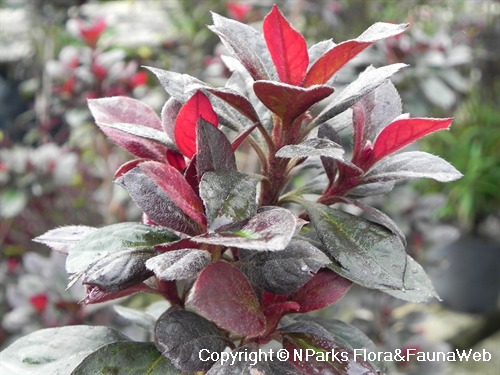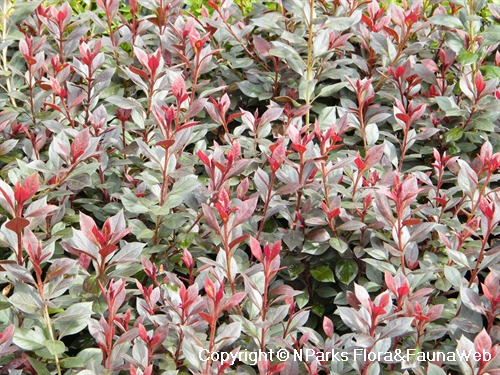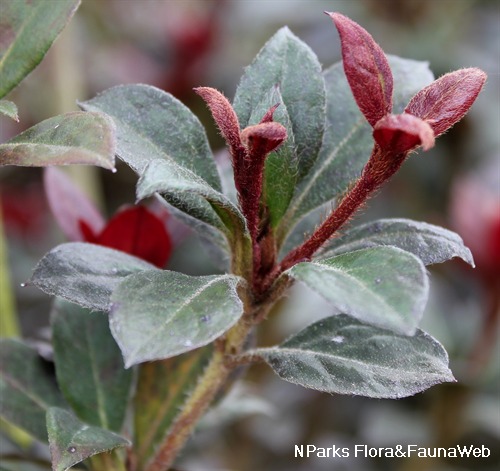
Name
Classifications and Characteristics
| Plant Division | Angiosperms (Flowering Seed Plants) (Dicotyledon) |
|---|---|
| Plant Growth Form | Shrub |
| Lifespan (in Singapore) | Perennial |
| Mode of Nutrition | Autotrophic |
Biogeography
| Native Habitat | Terrestrial |
|---|---|
| Preferred Climate Zone | Tropical |
Description and Ethnobotany
| Growth Form | A woody shrub that grows up to 1.5 m tall. |
|---|---|
| Foliage | Leaves are smooth, ovate to obovate, red to burgundy in colour. Leaf blade is tomentose, upper surface burgundy colour while red on the undersides, entire margin. Younger foliage are reddish, turning darker burgundy as they mature. |
| Stems | Stems are red and tomentose. |
| Flowers | Red flowers. |
| Cultivation | Plant grows best in well drained soil, under full sun but can tolerate dappled sun. Plants can be trained as hedge. Prune regularly to remove any straggly growth. |
| Etymology | The genus Azalea means of dry habitats. |
Landscaping Features
| Landscaping | Warm red foliage makes the plant ideal for accent planting. The plant can also be grown to as dramatic hedge. |
|---|---|
| Desirable Plant Features | Ornamental Foliage |
| Landscape Uses | General, Parks & Gardens, Flowerbed / Border, Container Planting |
Plant Care and Propagation
| Light Preference | Full Sun |
|---|---|
| Water Preference | Moderate Water |
| Rootzone Tolerance | Moist Soils, Well-Drained Soils |
| Propagation Method | Seed, Stem Cutting |
Foliar
| Foliage Retention | Evergreen |
|---|---|
| Mature Foliage Colour(s) | Green - Bluish Green |
| Mature Foliage Texture(s) | Velvety / Furry / Tomentose, Rough |
| Prominent Young Flush Colour(s) | Red |
| Foliar Type | Simple / Unifoliate |
| Foliar Arrangement Along Stem | Alternate |
| Foliar Attachment to Stem | Petiolate |
| Foliar Margin | Entire |
Floral (Angiosperm)
| Flower Colour(s) | Red |
|---|---|
| Flower Grouping | Solitary |
| Flower Location | Axillary |
Image Repository
Others
| Master ID | 30583 |
|---|---|
| Species ID | 4892 |
| Flora Disclaimer | The information in this website has been compiled from reliable sources, such as reference works on medicinal plants. It is not a substitute for medical advice or treatment and NParks does not purport to provide any medical advice. Readers should always consult his/her physician before using or consuming a plant for medicinal purposes. |


